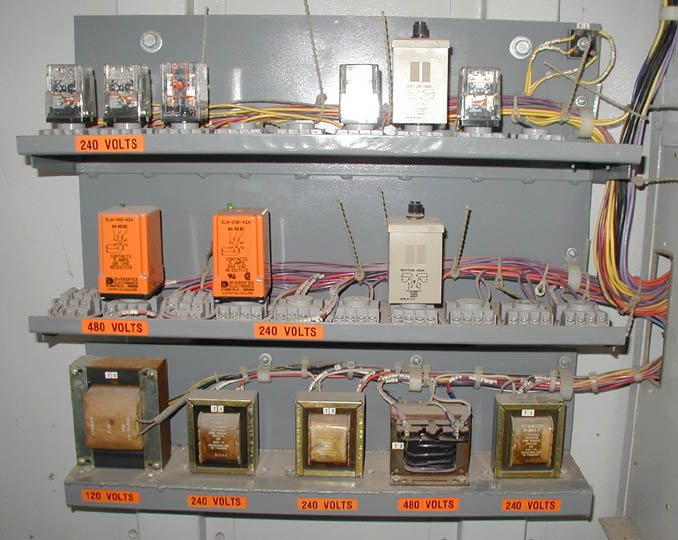
|
|
A set of narrow shelves is attached to a piece of 1/16" sheet, which is
bolted to the Unistrut in the electrical locker, and used to support
the relays and control transformers that control the car. Wiring is
laid in at the back of the shelves, using bead ties to temporarily hold
it in place. Once all of the wiring is completed, wire ties are applied
and the bead ties removed. Note that all of the relays are socketed for
easy replacement. Carrying one spare of each kind is a good thing, in
case of failures on the road.
Photo by E. Wilde, |
